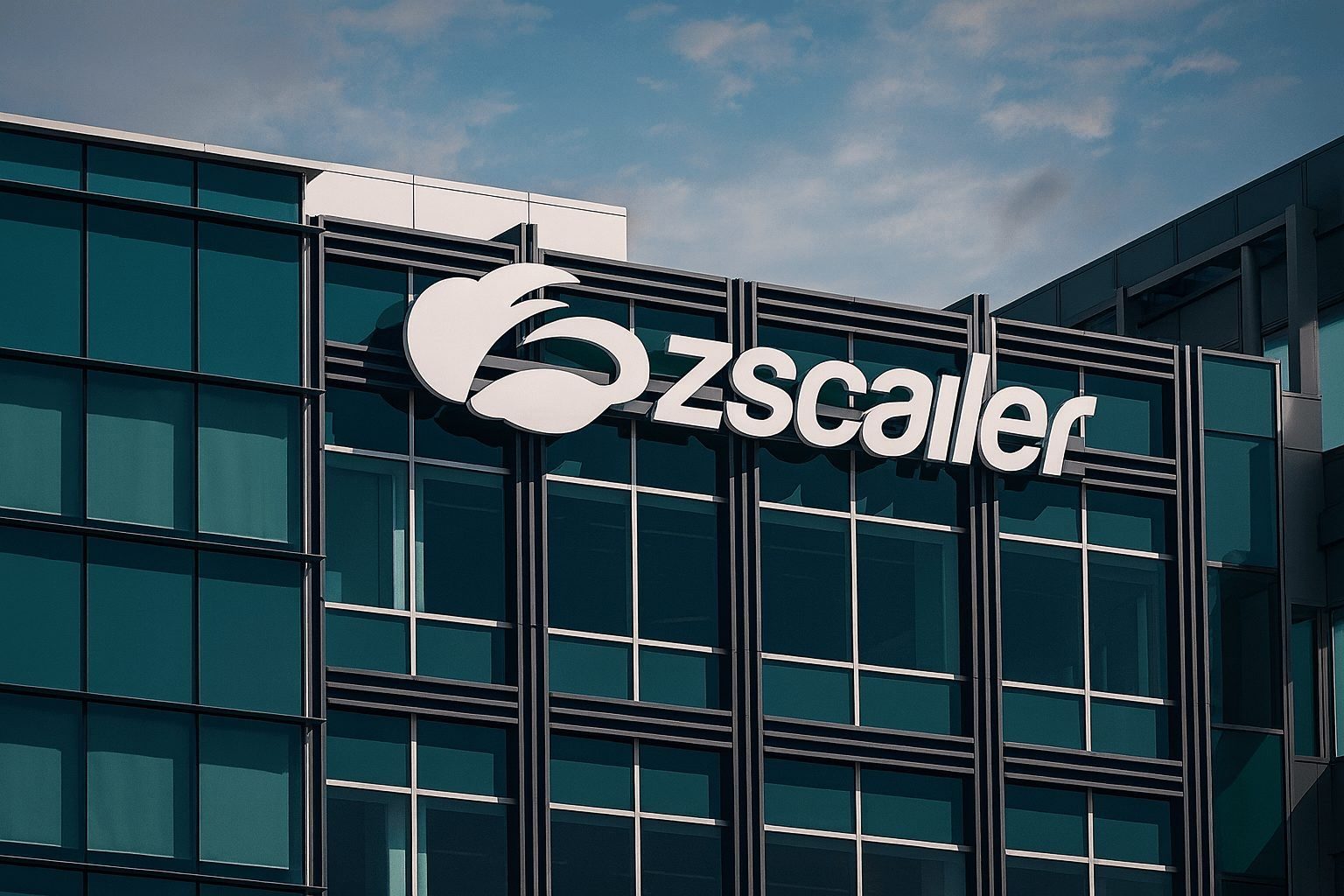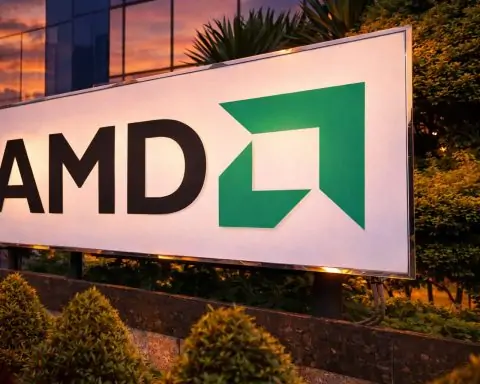Zscaler Inc. (NASDAQ: ZS) heads into Friday’s U.S. pre‑market session (November 28, 2025) under pressure after a sharp post‑earnings sell‑off, despite delivering another “beat and raise” quarter. The cloud‑security specialist closed Wednesday, November 26, at $251.97, down about 13% on the day, trimming its year‑to‑date gain to just under 40% and leaving shares roughly a quarter below their early‑November 52‑week high near $337. [1]
At the same time, Zscaler reported robust fiscal Q1 2026 results (quarter ended October 31, 2025): revenue growth in the mid‑20s, expanding cash flows, and higher full‑year guidance. Yet concerns about billings, premium valuation, and still‑negative GAAP margins have triggered profit‑taking and a reassessment of expectations heading into tomorrow’s open. [2]
Latest Zscaler stock performance ahead of Friday’s open
- Last close (Nov 26, 2025): $251.97
- One‑day move: –13.03%
- Market cap: about $35 billion
- 52‑week range: approximately $164.78–$336.99, with the high set in early November
- 12‑month return: +~20%; YTD: +~40% [3]
Wednesday’s drop followed a strong run earlier in 2025, when ZS rallied from the mid‑$160s in April to above $330 by early November before rolling over with the broader high‑growth software group. [4]
On a technical basis, shares are now trading well below their 50‑day and 200‑day moving averages (around $306 and $291, respectively), a sign that sentiment has shifted decisively in the short term and that the stock has broken important intermediate support levels. [5]
Heading into Friday’s pre‑market session, traders will be watching whether buyers step in around the $250 zone, or whether momentum sellers continue to lean on the name after Wednesday’s high‑volume slide (almost 9.8 million shares traded, roughly 5–6× typical daily volume). [6]
Q1 FY2026: A classic “beat and raise” quarter
Zscaler’s latest numbers looked strong on almost every traditional growth metric:
- Revenue: $788.1 million, +26% year‑over‑year, above both company guidance ($772–$774 million) and Wall Street estimates (around $773–$774 million). [7]
- Non‑GAAP EPS: $0.96, up roughly 24% vs. a year ago and beating consensus by about 10–12 cents. [8]
- Annual Recurring Revenue (ARR): about $3.2 billion, +26% year‑on‑year, underscoring durable demand for the Zero Trust Exchange platform. [9]
- Remaining Performance Obligations (RPO):$5.9 billion, +35% vs. last year, with ~47% classified as current RPO—effectively contracted revenue expected within the next 12 months. [10]
- Customer metrics:
- 698 customers generating over $1 million in ARR
- 3,754 customers with more than $100,000 in ARR
Both figures continue to trend higher, showing that Zscaler is deepening its foothold among large enterprises. [11]
Profitability on an adjusted basis also improved:
- Non‑GAAP gross margin: 80%, down 100 bps year‑on‑year but still exceptionally high for an infrastructure‑heavy security platform. [12]
- Non‑GAAP operating income: $172 million, with operating margin expanding to 22%, up about 100 bps from last year. [13]
- Free cash flow: $413.3 million, equal to 52% of revenue, up from a 46% FCF margin a year ago—evidence that the model is throwing off meaningful cash even as the company invests heavily in AI and platform expansion. [14]
The balance sheet remains strong, with $3.32 billion in cash and short‑term investments and no near‑term liquidity stress, giving Zscaler flexibility to keep investing in R&D, acquisitions and partnerships. [15]
Guidance raised for FY2026 – but billings and GAAP losses worry the market
Management didn’t just beat expectations; it raised them:
- FY2026 revenue guidance increased to $3.282–$3.301 billion, slightly above the prior range of $3.265–$3.284 billion and ahead of consensus around $3.27 billion (roughly 22% growth vs. FY2025). [16]
- FY2026 non‑GAAP EPS is now expected in the $3.78–$3.82 band, up from prior guidance of $3.64–$3.68. [17]
- For Q2 FY2026, Zscaler guided revenue to $797–$799 million (above consensus of about $794 million) and non‑GAAP EPS of $0.89–$0.90 (vs. expectations around $0.88). [18]
So why did the stock tank?
- Billings miss and elevated expectations
Several analyses note that billings came in around $597 million, below what many high‑growth investors were expecting. For a stock priced for flawless execution, a shortfall in a key forward‑looking metric like billings can overshadow otherwise strong headline numbers. [19] - GAAP profitability remains elusive
While non‑GAAP metrics look healthy, Zscaler is still losing money under GAAP:- Q1 GAAP basic EPS: about –$0.07
- Quarterly net loss: roughly $11.6 million
- Trailing 12‑month net loss: about $41 million, with net margin around –1.6%. [20]
- Rich valuation leaves little room for error
Even after Wednesday’s drop, Zscaler trades at roughly 14× trailing sales, well above the broader U.S. software average, and a price target‑based implied P/E for 2028 north of 400×, according to one fundamental analysis. [22]
That kind of multiple assumes years of double‑digit growth and sustained margin expansion. Any wobble in billings, macro spending, or competitive position can hit the stock disproportionately hard. - Heavy run‑up, then profit‑taking
Investor’s Business Daily and other outlets note that ZS had climbed around 60–70% year‑to‑date heading into earnings and was trading around a breakout “buy point” near $318 earlier in November. The combination of stretched technicals, a crowded long trade and an earnings event proved to be a catalyst for profit‑taking. [23]
In short, Zscaler executed well, but not perfectly enough to satisfy a market that had priced in near‑flawless results.
Wall Street still largely bullish on ZS
Despite the sell‑off, the Street remains broadly constructive:
- Around 33–34 analysts cover ZS, with a consensus rating of “Buy” (or “Moderate Buy”). [24]
- The average 12‑month price target clusters in the $320–$325 range, implying ~25–30% upside from Wednesday’s close. The highest targets sit near $390, with the lowest around $215. [25]
- Recent rating activity has been overwhelmingly positive, even after the earnings print:
- CapitalOne upgraded ZS from Equal‑weight to Overweight, raising its target to $320 after the company delivered a roughly 2% revenue beat and accelerating RPO growth to 35%. [26]
- Baird, JP Morgan, UBS, Scotiabank, Citizens and others reiterated bullish calls on November 26, with updated price targets mostly in the $310–$360 band. [27]
- Earlier in November, firms like Morgan Stanley, Mizuho, Wedbush, Rosenblatt and RBC boosted their targets, some as high as the mid‑$360s, citing strong AI‑driven demand and platform expansion. [28]
A MarketBeat summary points to one Sell, a handful of Holds, and the overwhelming majority rating the stock a Buy or Strong Buy, with an average target around $317. [29]
That said, the gap between Zscaler’s premium valuation and its still‑negative GAAP earnings is clearly on analysts’ radar. Several notes emphasize that the company needs to keep demonstrating operating leverage and consistent billings growth to justify its multiples.
AI, Zero Trust and cloud partnerships: long‑term growth pillars
Beyond the quarter, Zscaler has been busy reinforcing its strategic position in AI‑driven security and zero trust networking:
1. SPLX acquisition: securing the AI lifecycle
In early November, Zscaler announced the acquisition of AI security pioneer SPLX, adding capabilities such as “shift‑left” AI asset discovery, automated red‑teaming and governance to the Zero Trust Exchange. The goal: help enterprises secure AI models and agents from development through deployment. [30]
This move aligns with the company’s narrative of becoming the go‑to zero trust platform for GenAI and AI‑powered workloads, rather than just a secure web gateway or VPN replacement.
2. $1B milestone on AWS Marketplace
Zscaler recently disclosed that it has surpassed $1 billion in software sales via AWS Marketplace, with six AWS competencies, including a specialty in AI Security, and 68% year‑over‑year growth in public‑sector sales via AWS. [31]
This milestone reinforces two key points important to investors:
- Enterprise and public‑sector customers are comfortable buying Zscaler at scale through hyperscaler marketplaces.
- AWS is not just an infrastructure partner but an important go‑to‑market channel.
3. Deepening ties with Microsoft and HCLTech
- On November 18, Zscaler was named an early adoption partner in the Microsoft Entra Agent ID ecosystem. The company will integrate with Agent Registry, Agent ID and Agent Directory to help customers onboard, authenticate and govern AI agents at scale using zero‑trust controls. [32]
- In October, HCLTech and Zscaler expanded their partnership to deliver AI‑powered security and network transformation, integrating Zscaler’s Zero Trust Exchange into HCLTech’s Cybersecurity Fusion Center and managed detection and response offerings. [33]
These collaborations increase Zscaler’s relevance in large, complex digital‑transformation projects, especially where AI agents, identity, and zero‑trust architectures converge.
4. Thought leadership in AI‑driven threats
Zscaler’s ThreatLabz unit has highlighted a >3,000% surge in AI/ML transactions and a steep rise in AI‑powered phishing and ransomware attacks across its cloud, underscoring the security challenges that GenAI introduces and the need for zero‑trust defenses. [34]
For investors, this research supports the thesis that AI is both a risk and a growth driver for Zscaler: it increases the attack surface, but also expands demand for advanced security platforms.
Profitability, valuation and competition: key risks to monitor
Even with strong growth drivers, Zscaler is not without meaningful risks:
- Sustained negative GAAP earnings
The company’s GAAP net margin remains slightly negative, and while losses are shrinking, profitability is still a “tomorrow story.” Some forecasts project a multi‑year path to positive GAAP earnings, putting pressure on management to sustain high growth and cost discipline. [35] - Premium valuation vs. peers
Trading at well over 10× sales and far above average software multiples, Zscaler’s stock price embeds high expectations for revenue growth and margin expansion. If billings or ARR growth decelerate more than expected, valuation compression could outweigh fundamental improvement in the near term. [36] - Competitive intensity in cybersecurity and AI
Zscaler competes with heavyweights like Palo Alto Networks, CrowdStrike, Fortinet, and Cloudflare, all of which are aggressively investing in their own zero‑trust and AI‑security offerings. [37] - Stock‑based compensation and insider selling
Some analyses flag elevated stock‑based compensation and recent insider sales as potential concerns around dilution and signaling, especially given the already rich valuation. [38]
What to watch before the November 28, 2025 pre‑market open
As traders position ahead of Friday’s session, several dynamics could drive early price action in ZS:
- Whether $250 holds as a short‑term support area
With the stock down more than 20% from its early‑November high but still up sharply year to date, a key question is whether dip‑buyers step in around the low‑$250s, or whether Wednesday’s move was the start of a deeper re‑rating toward more modest growth multiples. [39] - Follow‑through from analysts
Most major firms have reiterated or increased price targets even after the sell‑off, focusing on strong ARR/RPO momentum and AI security tailwinds. Investors will be watching for any fresh downgrades or target cuts that might signal a broader shift in sentiment. [40] - Macro risk appetite and tech sector flows
Wednesday’s action came amid rotation within growth and AI‑linked stocks as investors weighed interest‑rate expectations and valuation risks. If broader risk sentiment improves, ZS could see a relief bounce; if not, high‑beta names like Zscaler may remain under pressure. [41] - Upcoming catalysts: AWS re:Invent and AI announcements
Zscaler will have a visible presence at AWS re:Invent 2025 (Dec 1–5), showcasing Zero Trust + AI security, GenAI protection, and cloud‑workload solutions. Any new product launches, marquee customer wins, or expanded cloud partnerships coming out of the event could influence sentiment in the days following tomorrow’s session. [42]
Bottom line
Zscaler enters Friday’s pre‑market trade as a high‑growth, high‑expectation cybersecurity leader at an interesting crossroads:
- Fundamentally, Q1 FY2026 showed strong revenue growth, healthy free cash flow, and raised guidance, plus clear momentum across AI security, cloud partnerships, and zero‑trust adoption. [43]
- Technically and sentiment‑wise, the stock is digesting a steep post‑earnings, valuation‑driven pullback, now trading well below key moving averages after a long run‑up. [44]
For investors, tomorrow’s early trading could offer a first glimpse at whether the market sees this week’s 13% drop as a buy‑the‑dip opportunity in a strategic AI‑security franchise, or the beginning of a more prolonged cooling in one of 2025’s hotter cybersecurity names.
As always, this overview is for information purposes only and is not financial advice. Anyone considering an investment in Zscaler should evaluate their own risk tolerance and time horizon, review the company’s official filings and earnings materials, and consider consulting a qualified financial professional.
References
1. www.financecharts.com, 2. www.nasdaq.com, 3. www.financecharts.com, 4. www.investing.com, 5. www.marketbeat.com, 6. finance.yahoo.com, 7. www.nasdaq.com, 8. www.nasdaq.com, 9. ir.zscaler.com, 10. www.nasdaq.com, 11. www.nasdaq.com, 12. www.nasdaq.com, 13. www.nasdaq.com, 14. ir.zscaler.com, 15. www.nasdaq.com, 16. www.nasdaq.com, 17. www.nasdaq.com, 18. www.nasdaq.com, 19. finviz.com, 20. simplywall.st, 21. simplywall.st, 22. simplywall.st, 23. www.investors.com, 24. stockanalysis.com, 25. stockanalysis.com, 26. www.investing.com, 27. stockanalysis.com, 28. www.gurufocus.com, 29. www.marketbeat.com, 30. www.zscaler.com, 31. www.zscaler.com, 32. www.stocktitan.net, 33. www.hcltech.com, 34. www.zscaler.com, 35. simplywall.st, 36. simplywall.st, 37. www.investors.com, 38. simplywall.st, 39. www.financecharts.com, 40. stockanalysis.com, 41. finviz.com, 42. www.zscaler.com, 43. www.nasdaq.com, 44. www.financecharts.com







